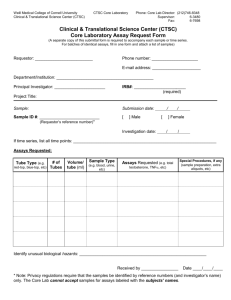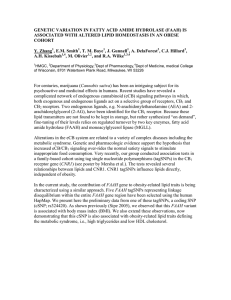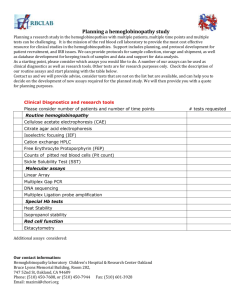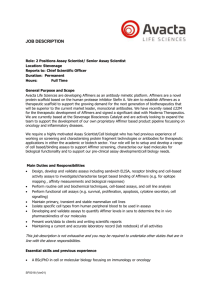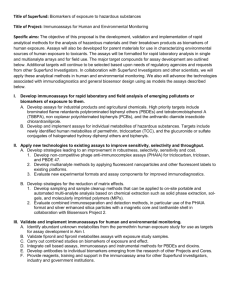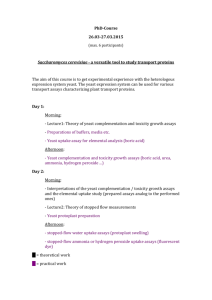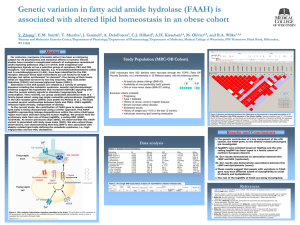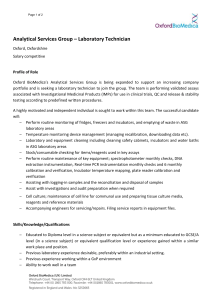MATERIAL AND METHODS S1 A) (CB1) Radioligand Binding
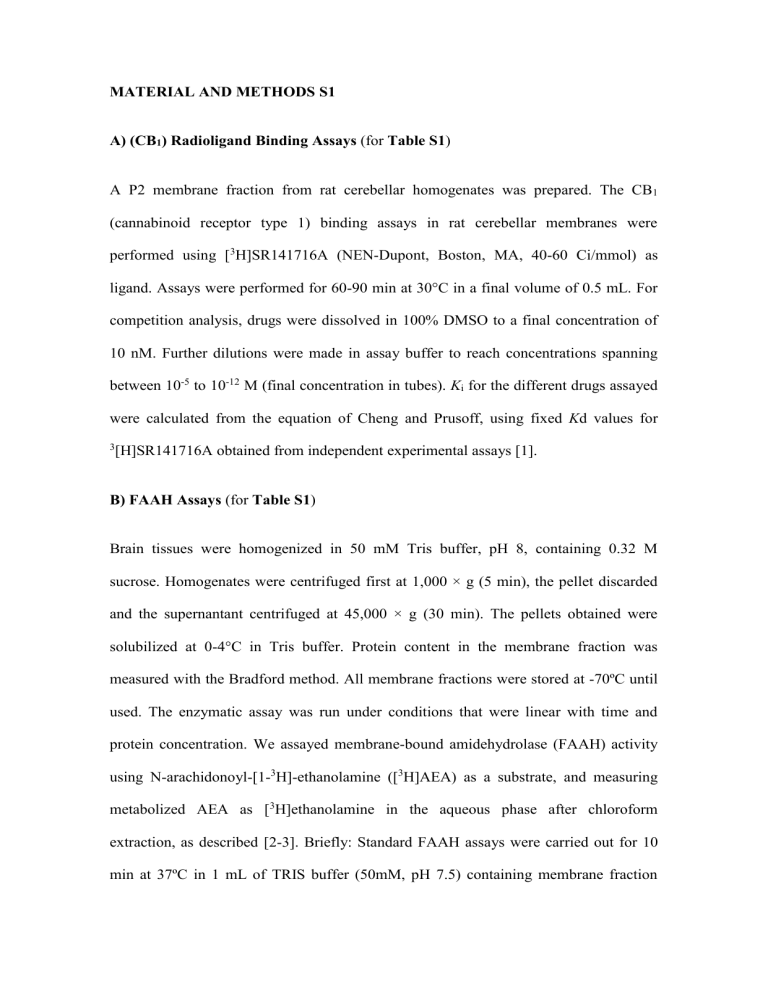
MATERIAL AND METHODS S1
A) (CB
1
) Radioligand Binding Assays (for Table S1 )
A P2 membrane fraction from rat cerebellar homogenates was prepared. The CB
1
(cannabinoid receptor type 1) binding assays in rat cerebellar membranes were performed using [
3
H]SR141716A (NEN-Dupont, Boston, MA, 40-60 Ci/mmol) as ligand. Assays were performed for 60-90 min at 30°C in a final volume of 0.5 mL. For competition analysis, drugs were dissolved in 100% DMSO to a final concentration of
10 nM. Further dilutions were made in assay buffer to reach concentrations spanning between 10
-5
to 10
-12
M (final concentration in tubes). K i
for the different drugs assayed were calculated from the equation of Cheng and Prusoff, using fixed K d values for
3 [H]SR141716A obtained from independent experimental assays [1].
B) FAAH Assays (for Table S1 )
Brain tissues were homogenized in 50 mM Tris buffer, pH 8, containing 0.32 M sucrose. Homogenates were centrifuged first at 1,000 × g (5 min), the pellet discarded and the supernantant centrifuged at 45,000 × g (30 min). The pellets obtained were solubilized at 0-4°C in Tris buffer. Protein content in the membrane fraction was measured with the Bradford method. All membrane fractions were stored at -70ºC until used. The enzymatic assay was run under conditions that were linear with time and protein concentration. We assayed membrane-bound amidehydrolase (FAAH) activity using N-arachidonoyl-[1-
3
H]-ethanolamine ([
3
H]AEA) as a substrate, and measuring metabolized AEA as [ 3 H]ethanolamine in the aqueous phase after chloroform extraction, as described [2-3]. Briefly: Standard FAAH assays were carried out for 10 min at 37ºC in 1 mL of TRIS buffer (50mM, pH 7.5) containing membrane fraction
(100 mg of protein) and a saturating 10 µM concentration of [ 3
H]AEA (10,000 dpm/mL) with Ultima Gold scintillation liquid (Perkin Elmer, Waltham, MA, USA).
Identical incubations were performed in the absence of tissue: these ‘control’ samples contained around 80-95 dpm/sample that were subtracted from values obtained with tissue samples. Determinations of disintegrations were measured using a Beckman
LS6500 scintillation counter. Results were expressed as % of FAAH activity vs. membrane non-treated.
C) In silico Pre-ADMET Study (for Table S2 )
The Molinspiration Cheminformatics website (http://www.molinspiration.com/; accessed 10/07/2013) was used to perform the theoretical oral bioavailability study analyzing the molecular properties of the Lipinski rule (cLogP: logarithm of the partition coefficient between n-octanol and water; MW: molecular weight; HBA: number of hydrogen bond acceptors; and HBD: number of hydrogen bond donors). To predict the blood-brain barrier permeability, we employed the theoretical logarithm of blood brain portioning (logBB), which uses the polar surface area (PSA) and the clogP as descriptors. Finally, a theoretical toxicity study was performed using the Osiris
Property Explorer (http://www.organic-chemistry.org/prog/peo/; accessed 09/08/2013).
Bibliography
1. Cheng Y, Prusoff WH (1973) Relationship between the inhibition constant (K1) and the concentration of inhibitor which causes 50 per cent inhibition (I50) of an enzymatic reaction. Biochem
Pharmacol 22: 3099-3108.
2. Desarnaud F, Cadas H, Piomelli D (1995) Anandamide amidohydrolase activity in rat brain microsomes. Identification and partial characterization. J Biol Chem 270: 6030-6035.
3. Hansson AC, Bermudez-Silva FJ, Malinen H, Hyytia P, Sanchez-Vera I, et al. (2007) Genetic impairment of frontocortical endocannabinoid degradation and high alcohol preference.
Neuropsychopharmacology 32: 117-126.

